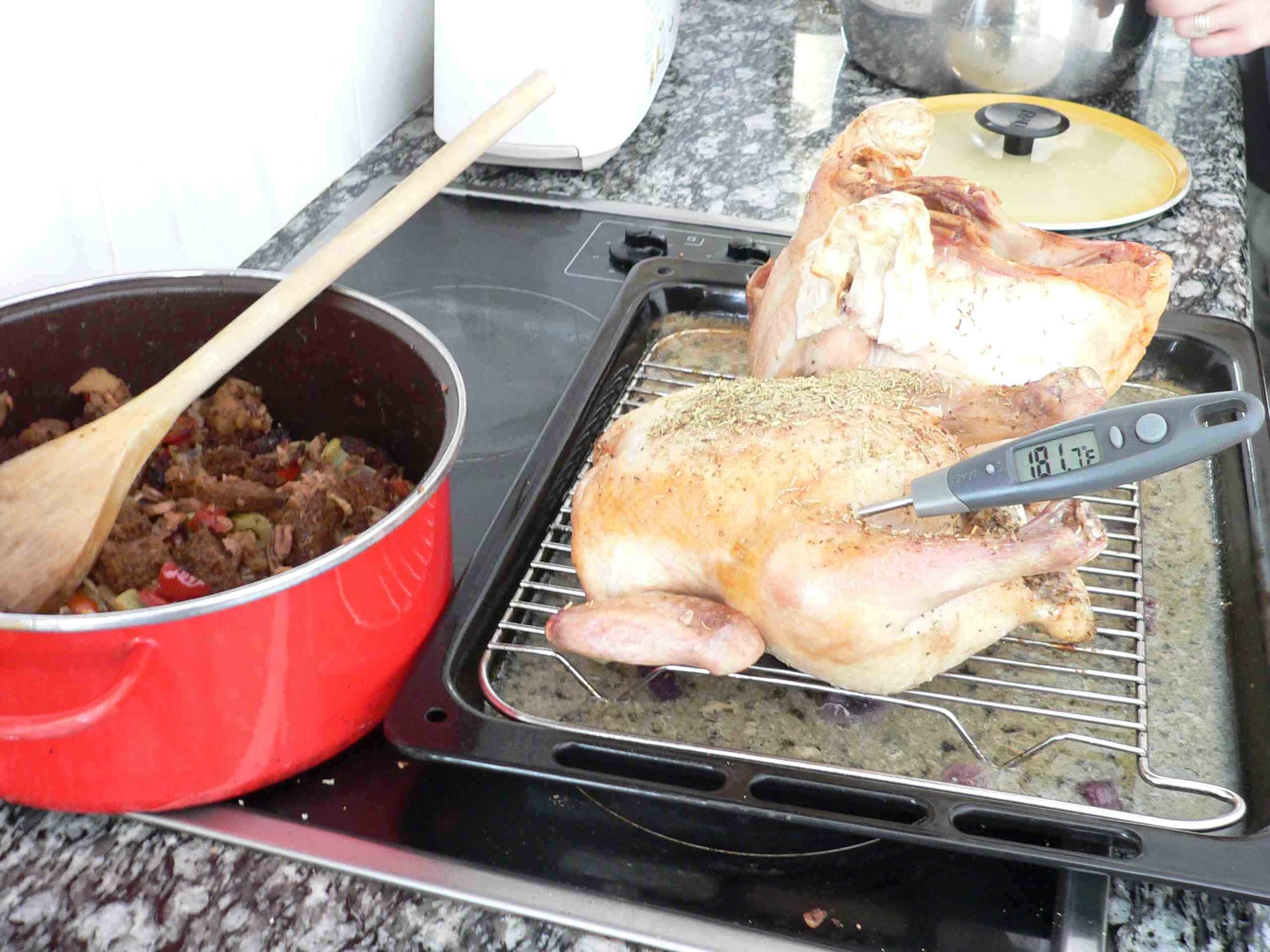
Tips for a food safe Thanksgiving dinner are popping up, so Chapman and I, always eager to jump on a bandwagon, came up with our own.
1. Never wash the Thanksgiving turkey. Research from the U.K. and elsewhere shows that washing turkey or chicken is an ideal way to spread dangerous bacteria throughout the kitchen .jpg) or food preparation area. Washing under running water can spray surface contamination up to three feet away.
or food preparation area. Washing under running water can spray surface contamination up to three feet away.
2. Never place a whole turkey over your head. While it may be a popular attempt at comedy in movies and television shows like “Mr. Bean” or “Friends,” do not inspect the internal cavity of the turkey by placing it over your head. This is potentially the most contaminated part of the turkey.
3. Make sure to use a tip-sensitive digital thermometer to ensure the turkey has reached 165 F. Color is an inadequate indicator of safety so always use a thermometer to test the turkey before serving.
4. Cool leftover turkey quickly. Refrigerate leftover turkey within two hours of taking it out of the oven. Some spore-forming bacteria will grow and form toxins if kept at room temperature for too long. Turkey should be cooled to 41 F quickly and this is best accomplished by placing sliced leftover turkey in reseal-able bags of one quart or smaller size. Bags should be laid flat in the refrigerator to allow cool air to circulate.
5. Do not pass babies with leaky diapers around the holiday table. This can lead to all kinds of food contamination, and does not end well for anyone at the table.
A table of holiday-meal related outbreaks is available at http://bites.ksu.edu/turkey-related-outbreaks.
.jpg)

 I threw it out.
I threw it out.

 source de E. coli O157:H7 était un aliment, une boisson ou un manipulateur d’aliments. Les officiels des services de la santé étudient les sources possibles en analysant les échantillons des aliments préparés.
source de E. coli O157:H7 était un aliment, une boisson ou un manipulateur d’aliments. Les officiels des services de la santé étudient les sources possibles en analysant les échantillons des aliments préparés. “We have two confirmed cases of E. coli O157:H7 in Jasper County. One of the cases resulted in a death.”
“We have two confirmed cases of E. coli O157:H7 in Jasper County. One of the cases resulted in a death.”.jpg) no more than two hours of taking the turkey out of the oven, adding,
no more than two hours of taking the turkey out of the oven, adding, personnes plus grand que de coutume, soit à la maison ou dans une cuisine collective, peut conduire à des erreurs au détriment de la sécurité des aliments.
personnes plus grand que de coutume, soit à la maison ou dans une cuisine collective, peut conduire à des erreurs au détriment de la sécurité des aliments.
.jpg)

 P.J. O’Rourke
P.J. O’Rourke
 The second Monday in October is Canadian Thanksgiving. In the U.S., it’s the fourth Thursday in November.
The second Monday in October is Canadian Thanksgiving. In the U.S., it’s the fourth Thursday in November.